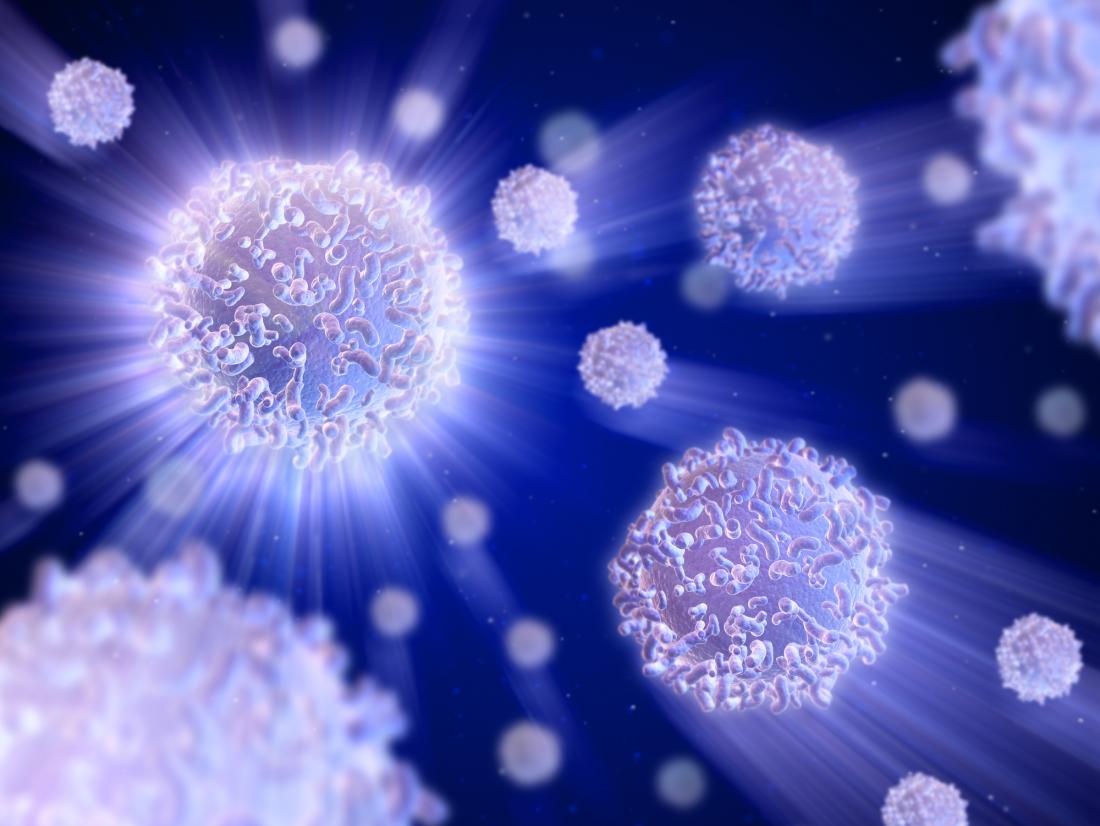White Blood Count High Platelets Low in Baby
White blood cells are vital components of the blood. Their role is to fight infection, and they are essential for health and well-being.
A high white blood cell count may indicate that the immune system is working to destroy an infection.
It may also be a sign of physical or emotional stress. People with particular blood cancers may also have high white blood cells counts.
A low white blood cell count can signal that an injury or condition is destroying cells faster than the body is making them, or that the body is producing too few of them.
White blood cells make up around 1% of all blood cells, and they are essential to regular function in the immune system. White blood cells are also known as leukocytes.
The bone marrow continuously produces white blood cells. They are stored within the blood and lymphatic systems until they are necessary for fighting an infection or disease in the body.

White blood cells are components of the blood that protect the body against disease and foreign invaders.
Several types of white blood cell serve different functions.
Most people will produce around 100 billion white blood cells every day.
There are normally between 4,500 and 11,000 white blood cells in every microliter of blood, although this can vary according to sex, age, and race.
There are several different types of white blood cell, each with varying responsibilities:
- Lymphocytes: These are vital for producing antibodies that help the body defend itself against bacteria, viruses, and other threats.
- Neutrophils: These are powerful white blood cells that destroy bacteria and fungi.
- Basophils: These alert the body to infections by secreting chemicals into the bloodstream, mostly to combat allergies.
- Eosinophils: These are responsible for destroying parasites and cancer cells, and they are part of an allergic response.
- Monocytes: These are responsible for attacking and breaking down germs or bacteria that enter the body.
When necessary, monocytes travel to other organs, such as the spleen, liver, lungs, and bone marrow, where they transform into a cell called a macrophage.
A macrophage is responsible for many functions, including removing dead or damaged tissue, destroying cancer cells, and regulating the immune response.
An increase in white blood cells is known as leukocytosis. It typically occurs in response to the following conditions:
- infection
- immunosuppression
- medications, such as corticosteroids
- a bone marrow or immune disorder
- certain types of cancer, such as acute or chronic lymphocytic leukemia
- inflammation
- injury or surgery
- emotional stress or trauma
- genetic or hereditary conditions
- labor
- pregnancy
- smoking
- obesity
- allergic reactions
- excessive exercise
Certain respiratory conditions, such as a whooping cough or tuberculosis, may cause the levels of white blood cells to increase.
In some cases, all white blood cells become affected. However, some people have a specific disease in which only one type of white blood cell is affected.
If levels of one particular type of white blood cell increase, this may be due to a specific trigger:
- Monocytes: High levels of monocytes may indicate the presence of chronic infection, an autoimmune or blood disorder, cancer, or other medical conditions.
- Lymphocytes: If there is an elevation in the level of lymphocytes, the condition is known as lymphocytic leukocytosis. This may occur as a result of a virus or an infection, such as tuberculosis. It may also be linked to specific lymphomas and types of leukemia.
- Neutrophils: Increased levels of neutrophils in their body lead to a physical state known as neutrophilic leukocytosis. This condition is a normal immune response to an event such as infection, injury, inflammation, some medications, and certain types of leukemia.
- Basophils: Rising levels of basophils may occur in people with a history of underactive thyroid disease, known as hypothyroidism, or as a result of other conditions, such as allergies or leukemia.
- Eosinophils: If a person registers high levels of eosinophils, the body might be reacting to a parasitic infection, medication, allergen, or asthma.
There is, on occasion, no identifiable cause for the increase in white blood cells. This is known as idiopathic hypereosinophilic syndrome. It can lead to serious complications, such as damage to the heart, lung, liver, skin, and nervous system.
Individuals with idiopathic hypereosinophilic syndrome may experience symptoms such as:
- weight loss
- fevers
- night sweats
- fatigue
- coughing
- difficulty breathing
- abdominal pain
- vomiting and diarrhea
- muscle aches
- joint pain
- chest pain
- swelling
- stomach ache
- skin rashes and itching
- pain
- weakness
- confusion
- speech impairment
- visual disturbances
- anemia
- coma
High white blood cell count during pregnancy
White blood cell levels increase significantly during healthy pregnancy because of the physical stress the body endures during this time. The levels start to rise within the first trimester and continue to rise into the third trimester.
During labor and in the hours following delivery, white blood cell levels may surge again, to between
Within 6–8 weeks of delivery, white blood cells return to their normal levels.

A doctor may use a blood test to determine levels of white blood cells.
If levels of white blood cells are lower than usual, this may be a sign that the person has reduced immune activity.
This can occur as a result of conditions similar to HIV, or immunosuppressant medications.
A deficiency of white blood cells is why people with conditions or medications that suppress the immune system have an increased risk of infection.
Unusual blood cell production is also a feature of some cancers, such as leukemia and lymphoma.
A number of conditions, collectively known as myeloproliferative disorders, can occur in the bone marrow.
These develop when too many immature blood cells are produced, leading to an imbalance. Myeloproliferative disorders are rare conditions that may or may not become malignant.
The exact effects of a high white blood cell count depend on the condition or factor causing them.
Fluctuations in white blood cell count might not cause any symptoms at all.
After noting any symptoms, a doctor can use a blood test to assess the white blood cell count, and further tests and examinations will often be necessary to pinpoint the exact cause of the problem.
A high white blood cell count may indicate several things, such as the immune system is working to destroy an infection, a sign of physical or emotional stress, or particular types of cancer.
Pregnancy also leads to high white blood cell count, as levels tend to rise from the first trimester, into the third. White blood cell levels will also rise in the hours following labor, due to the severe stress the body undergoes.
Meanwhile, a low white blood cell count can signal that an injury or condition is destroying cells faster than the body is making them. It could also mean that the body is producing too few of them.
While symptoms will depend on the cause of the high white blood cell count, fluctuations in white blood cell count may not cause any symptoms.
Read the article in Spanish.
White Blood Count High Platelets Low in Baby
Source: https://www.medicalnewstoday.com/articles/315133
0 Response to "White Blood Count High Platelets Low in Baby"
Post a Comment